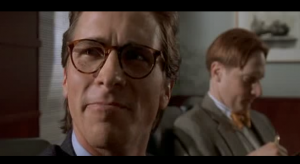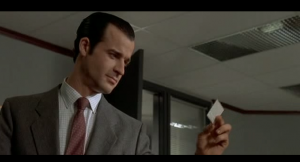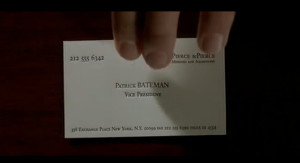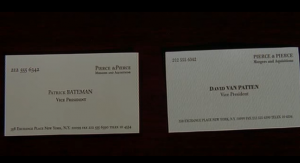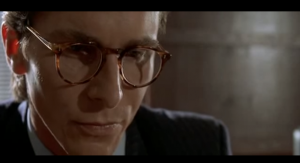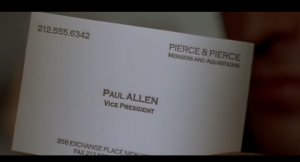This weeks major exercise had us split into groups of 10, that were in turn split again in 2 groups, an executive and support, which we would swap half way through the exercise. This exercise, when it was put forward to us on the Wednesday, felt a lot more like what we had done in Film TV1 than in this course so far, specifically in reference to the opportunity for pre-production. Unfortunately for us, we had very little pre-production done by Friday morning. This is mainly due to the fact that we didn’t have time, we were given the exercise Wednesday and were shooting on Friday first thing in the morning. Thankfully, Natalie had written up a rough shot list which she posted on the Facebook group we created for the exercise.
Friday morning we were missing a number of group members, although most arrived just in time for shooting. The other half of our group seemed more prepared and ready to go than ours so we jumped into filming. I was on sound which I feel quite confident with. Watching the other group work first gave me a better idea of what our limitations were, how I could work around these, as well as inspiring me get more out of our shoot. There were to major challenges I identified. The limitations of the space and our limited time frame. The time frame was the most obvious challenge, it affirmed my apprehension about spending too much time on individual shots, consequently the first group to shoot ended up having to scrap a shot, thankfully this was a non-essential cut away of the protagonists feet which ended up being of little consequence. The location was the most frustrating however, as it was a confined area with very little variety.
Natalie asked if I would like to direct, which I said I was happy to do. Despite directing being my preference, I initially decided to take a step back and give someone else the opportunity to do it if they felt strongly about it, which no one seemed to. Since we only had a shot list, and very limited time, I had to make quick decisions about were to place set-ups and how I would frame them. Expanding on this, I was always conscious of what Paul had said in a previous class, that we should weep overtime we look through the lens” because the shot is so good. While this is obviously hyperbole, I recognise the pressure and expectation as a legitimate challenge we should all be striving to achieve. I did not weep at any of the shots I framed. This is not to say that I don’t think that they were any good, it’s just that they were nothing special. One of my primary concerns was creating a sense of depth, opening up the shot so it didn’t feel amateur and restricted. I worked with the space I had and felt that what we did manage to capture was quality despite the locations confinement.
Everyone worked really well as a team, in both groups. It worked to my advantage that I had seen the other group shoot first. So far as concise epiphanies go, I would say that the biggest thing that jumped out at me, and something I am conscious of in my ‘method’ is the importance of pacing. Too many times on shoots there have been moments when people are standing around, getting bored and not knowing what they should be doing at a given time. As a director, it’s easy to get caught up with your own job and vision and forget that you have a crew of people waiting on you. With this in mind, I was extremely conscious of maintaining a solid working pace, as well as not dwelling too long on a single shot so that no one is ever bored or disinterested. This also improves the quality of the work, in regard to acting in particular. Giving an actor too long to dwell on there actions, or having too much time between takes breaks confidence and rhythm, which results in a weaker performance. We finished under time, which I took as a good thing, given that we had all the shots we set out to achieve. It did make me question if I had just done a rushed job, however I truly feel that I can recognise it as a positive quality of my directing style.

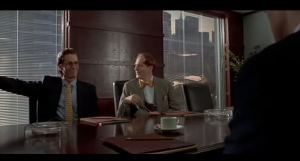

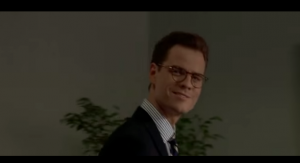 ver begins, explaining the situation. As the voice over happens, there is a cut to Marcus Halbistram, the person Allen confused Bateman for, panning from left to right as he enters the room and shakes hands with a colleague, Halbistram nods in acknowledgement toward the camera as he enters, as if he is acknowledging the voice over talking about him.
ver begins, explaining the situation. As the voice over happens, there is a cut to Marcus Halbistram, the person Allen confused Bateman for, panning from left to right as he enters the room and shakes hands with a colleague, Halbistram nods in acknowledgement toward the camera as he enters, as if he is acknowledging the voice over talking about him.
